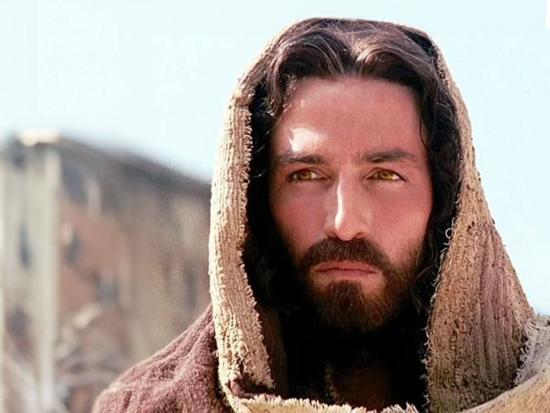
Mel Gibson’s “The Passion of the Christ: Resurrection” is one of the most long-awaited sequels in recent memory, inside or outside the Church. Jim Caviezel’s portrayal of Jesus Christ was riveting, and Caleb Deschanel’s cinematography of the Crucifixion was an Oscar-winning performance.
It was 2004 when “The Passion of the Christ,” Mel Gibson’s seminal film, made over $370 million at the domestic box office and $611 million internationally.
However, it was R-rated for its grueling depiction of Jesus as He prepared to sacrifice His life for our sins. That didn’t deter moviegoers from making it the highest-grossing top R-rated movie of all time, a distinction that lasted 20 years until 2024 with the release of “Deadpool & Wolverine.”
Two decades later, the resurrection will finally begin its motion picture ascent as the scouting location field trips have commenced.
Earlier this week Gibson reportedly toured Malta with a production team and subsequently arrived in the Southern Italian region of Puglia where he visited various rural locations, including the ancient towns of Ginosa, Gravina Laterza and Altamura, Puglia Film Commission director Antonio Parente said.
Variety, Sept. 2024
Site selections–that made headlines these days given the zealous anticipation for this film. Since news has been scarce for anything related to “The Passion of the Christ: Resurrection,” here is everything we know.
Cast
The good news for fans of the original film is that most of the original cast will return for the sequel, beginning with Caviezel reprising his role as Jesus. IMDb also has Francesco De Vito returning as Peter and Maia Morgenstern returning as Mary, both of which are integral roles for “The Passion of the Christ: Resurrection.”
There have been rumors of Christo Jikov coming back as John and Monica Bellucci returning as Mary Magdalene, but no official news on that front.
Parts
One peculiar aspect of the sequel is there will be a couple of parts to this story. The film’s official title is “The Passion of the Christ: Resurrection – Chapter 1.” There is little information about why this is happening or where each film will break in the Gospels and the Book of Acts. Yet, with a two-part sequel, many aspects of Jesus’ final moments will be covered.
Timing
The sequel has been rumored since 2016. That was when screenwriter Randall Wallace, who also worked with Gibson on “We Were Soldiers” and “Braveheart,” shared that a script was in the works. Two years later, Caviezel spoke to Fox News and said “The Passion of the Christ: Resurrection” would be “the biggest film in world history.”
At that time, the film’s script was in its fifth draft. Then came the rumors about when it could be seen on screen. IMDb lists the debut on April 18, 2025, on Good Friday. Since the latest news about the film is a site visit, the odds are probable the film will be bumped by a year to keep for the symbolic timing.
Story
Mel Gibson and Randall Wallace are discreet about the film’s focus. Although it is set after the events of the crucifixion, there are few details about where in the story of Christ’s return the film will take place. With news about this being a two-part sequel, it’s likely the subject matter will tackle a few noteworthy aspects, including:
- The stone rolled away and the Roman guards’ witness (Matthew 28:1-4)
- The angel of the Lord’s announcement to Mary Magdalene and other women that Jesus has risen (Matthew 28:5-8)
- Jesus appeared to Mary Magdalene as she wept at His tomb (John 20:11-18)
- Jesus redirected two of His followers from Jerusalem on the Road to Emmaus (Luke 24:13-35)
- Appearances to the Disciples (John 20 and 21)
- Declaration of the Great Commission and instruction to wait upon the Holy Spirit (Mark 16:14-18)
- His Ascension (Acts 1:9-11)
Puzzle
April 2023 marked the first time Gibson spoke about the sequel in any form of detail. His overanalyzed remarks led laity and theologians alike to wonder what else awaits this storyline.
“You can’t do it lightly and quickly. You have to really consider what it is that you need to show in order to be poignant,” he said.
“It can’t be linear. You have to have many things to juxtapose against one another, even from different time periods, in order to illustrate what something means in a more full way,” Gibson continued.
“And I think it’s going to be a real jigsaw puzzle to do.”
The pieces even relate to his (plural) scripts.
“I have two scripts, and one of them is very structured and a very strong script, and kind of more what you’d expect, and the other is like an acid trip. Because you’re going into other realms and stuff. I mean, you’re in hell, and you’re watching the angels fall. It’s like, crazy.”
Theme
The movie title shares the film’s premise — resurrection. However, a crux of that story appeals to Gibson more — the divine descent into Hell, or, otherwise known as, “The Harrowing of Hell.” Those three days of Jesus’ life were after Jesus’ death and before His resurrection, captured in 1 Peter.
The theatrical nature of this vantage point will take center stage in the movie, as did a few scenes in “The Passion of the Christ.” Regardless, the roots of “Resurrection” will be based on Biblical lore, study, and dogma. And, Jim Caviezel could be correct once this comes to the big screen.
Only time–and tickets–will tell.


